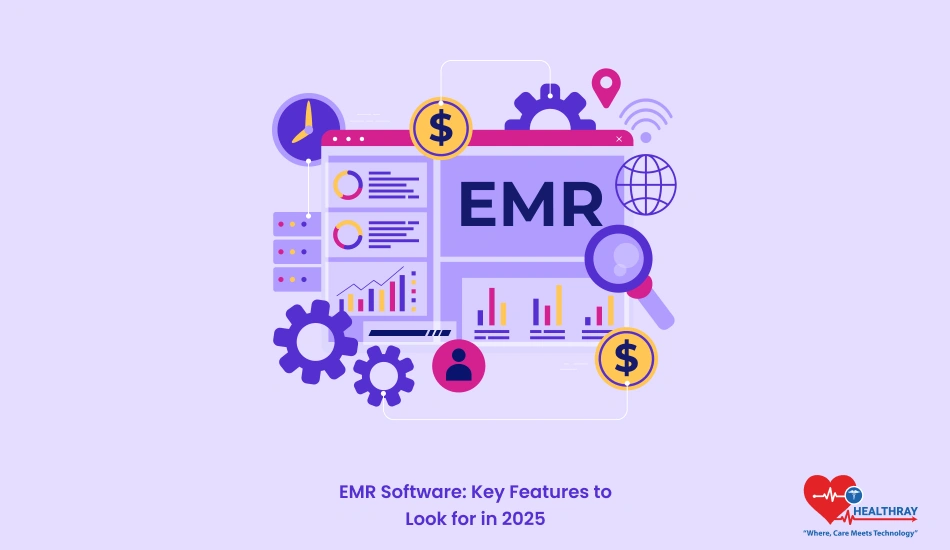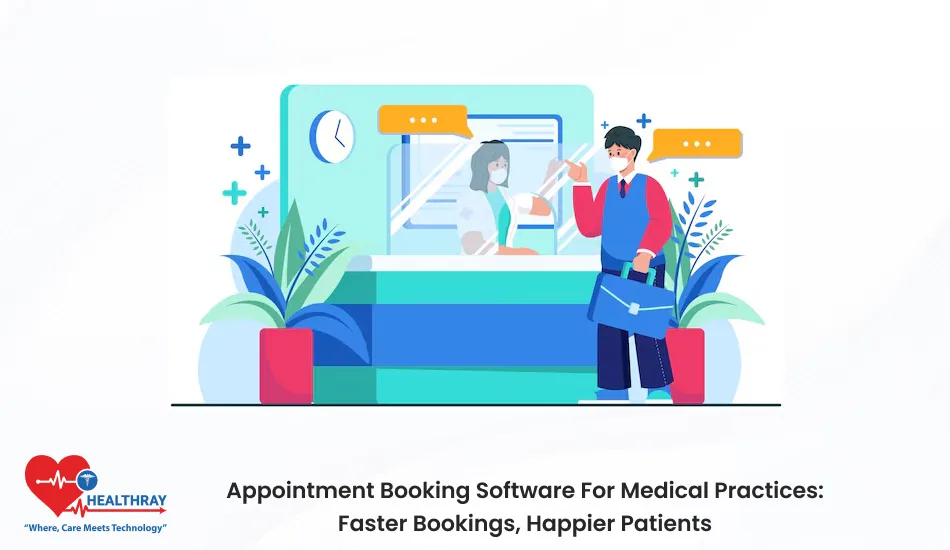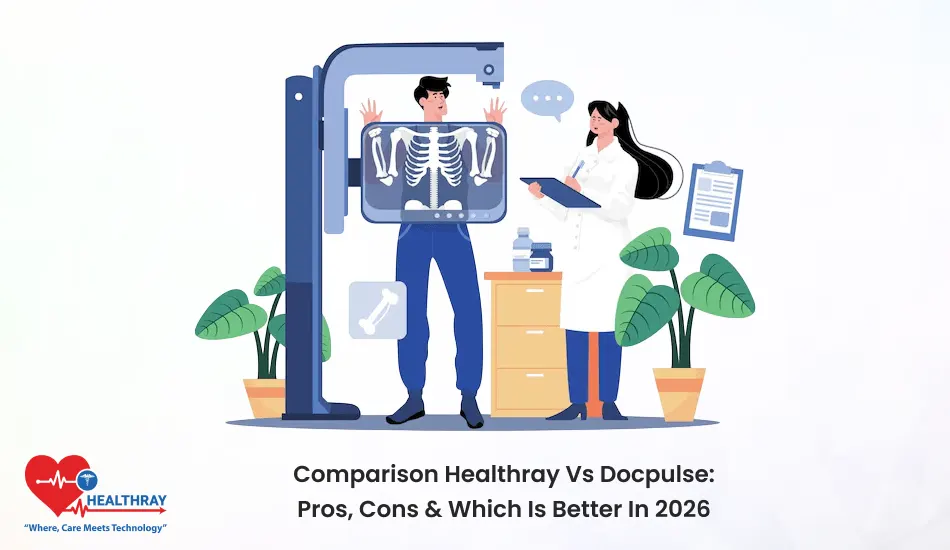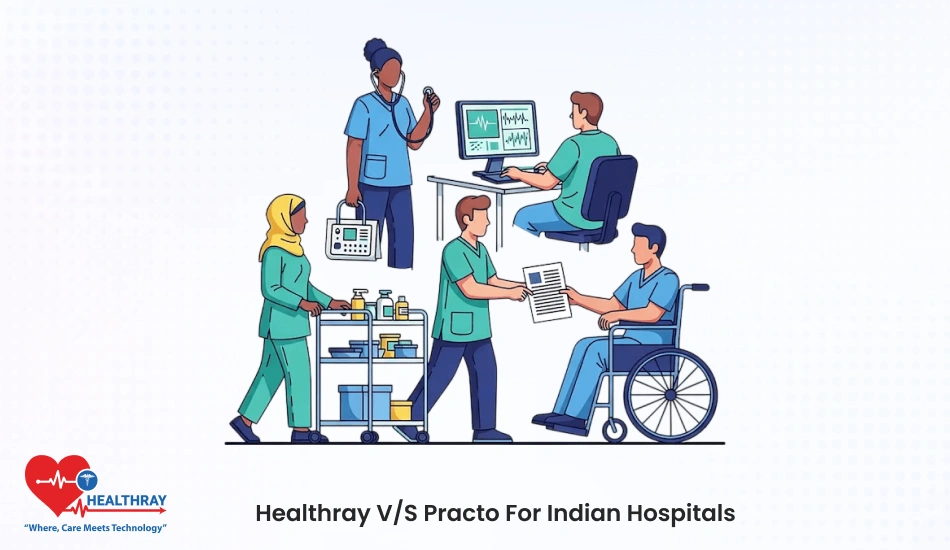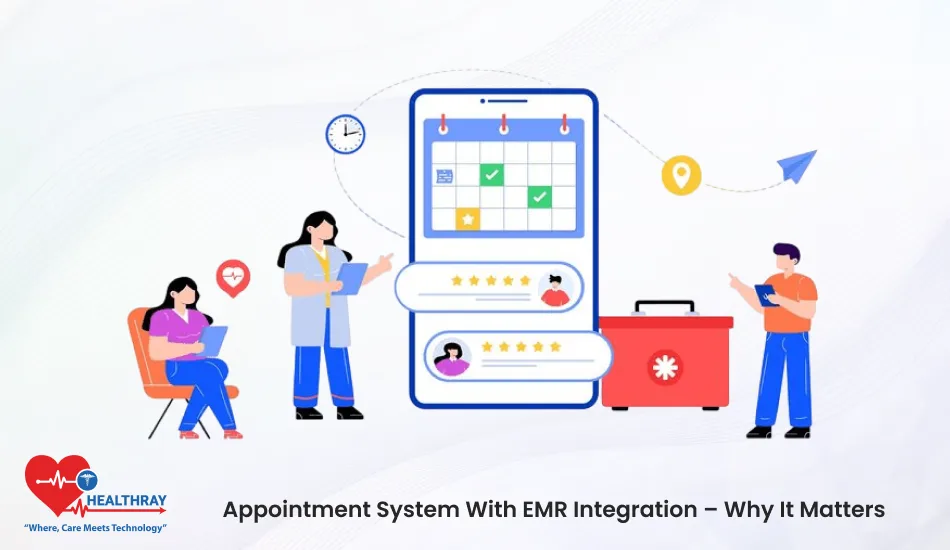Introduction
Growth in patient volumes, regulatory scrutiny, and medical technology. It is no longer solely about managing patient data for hospital owners, multi-specialty hospital owners and clinic owners, when choosing the appropriate Electronic Medical Record software (EMR), a subscription does not justify an Electronic Medical Record system that is inadequate, inefficient, bulky, or integrated into a platform that is unavailable or restrictive in a form of an embedded EMR.
Best system is expected to be compatible with other healthcare devices, enable telemedicine, provide data confidentiality, and leverage artificial intelligence to improve algorithm design. In this article, we’ll discuss the important characteristics that need careful consideration when choosing EMR software to ensure that your healthcare institution is ready for the coming years.
Interoperability In The Modern EMR System
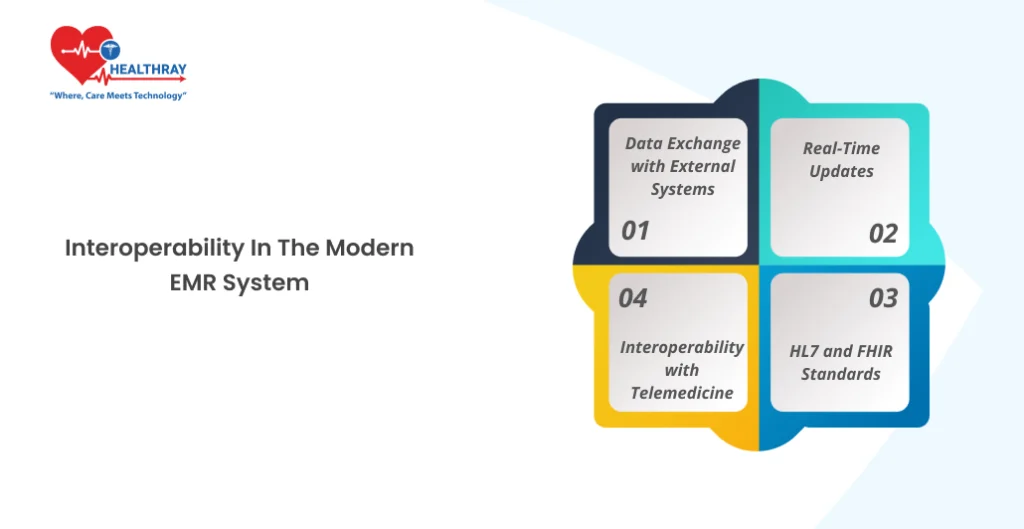
Interoperability is one of the keystones of the modern EMR system. Up to and including 2025, both more hospitals and clinics will be able to employ external health instruments and databases that share information with their own systems in a clumsy way, and, of course, this will also result in potential lack or delayed information compromising an aspect of patient care.
- Data Exchange with External Systems: There should be little problem exchanging data from your EMR with external systems, e.g., lab results, radiology centers, pharmacies, and the like. This may help to guarantee that all necessary data will be accessible to others who are working on a patient.
- Real-Time Updates: Find systems that can be used to provide real-time data updates in order that physicians can review lab results, medication changes, and radiology studies immediately.
- HL7 and FHIR Standards: EmR must also comply with international data exchange standards like HL7 (Health Level 7) and FHIR (Fast Healthcare Interoperability Resources), in order to overcome the lack of interoperability among different systems and institutions.
- Interoperability with Telemedicine: Telemedicine has now become an essential service and your EMR is expected to integrate seamlessly with telemedicine systems so as to bring about effective remote patient care like physical visits.
AI and Automation for Better Workflow
Artificial Intelligence (AI) and automation are changing management of health care. In 2025, AI will guarantee more comfortable administration of EMR systems along with a more comfortable clinical decision-making. Automation can cut the manpower employed by physicians and nurses and it is used by them to take care of patients instead.
- Automated Appointment Scheduling: EMR systems are needed in order to implement fully automated appointment scheduling function robots capable of treatment patient booking, reminder, and cancellation without any operator’s control. This helps reduce no-shows and keeps your schedule organized.
- AI-Driven Clinical Insights: AI can be used to analyze patient information to identify patterns and to predict patient outcomes. It also can provide in real time information, e.g., possible diagnosis, treatment guidelines and health risks.
- Predictive Analytics for Resource Management: AI can predict the rate of admissions of a patient, optimize the allocation of staff, and aid the management of inventory for drugs and supplies.
- Automated Billing and Claims Processing: through automation, the billing process can be streamlined; automatically generated billing, claims handling to the insurance firm, and monitoring of payment status decreases errors and administrative costs.
- Voice-to-Text for Clinical Notes: EMR systems may also use AI-powered voice-enabled speech-to-text (STT) applications to transcribe speech into written, clinical-note writing by physicians as a means of delivering value to physicians who prefer dictating note rather than typing.
Advanced Data Security and Compliance Features
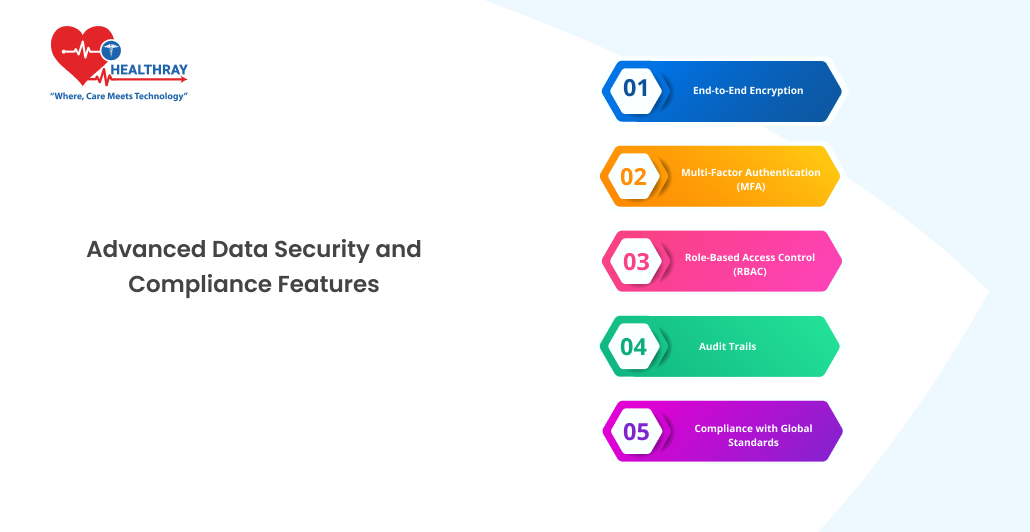
As hospitals and clinics grapple with the responsibility of iceberg management of patient data, it is paramount to secure that data. In 2025 the healthcare data breaches will still be a major problem, and for Electronic Medical Records System, it is essential to have high security policies.
- End-to-End Encryption: Its electronic medical record (EMR) system should be end-to-end encrypted in order to ensure data protection at the transmission and storage levels. This prevents unauthorized access to patient records.
- Multi-Factor Authentication (MFA): MFA offers an additional layer of security, since identity verification involves multiple channels, e.g., password, and mobile codes.
- Role-Based Access Control (RBAC): This functionality enables you constrain access to protected information by user’s role in the hospital/clinic, so that the information contained can be accessed only by the properly allowed staff.
- Audit Trails: EMR systems should keep detailed logs of all actions performed within the software. These audit trails are useful to monitor who has rolled up to patient records, what change has been done and when those modifications occurred which is very important for complying.
- Compliance with Global Standards: Your EMR has to meet relevant regulations e.g., the HIPAA in the USA or the GDPR in Europe. And, it should be developed for any future legislation that may be adopted as the storage and management of healthcare data develops.
User-Friendly Interfaces and Customization
The usability of an EMR system is an important determinant in the acceptance and success of an EMR system. Physicians, nurses, and administrators should not have to feel lost in a maze. The interface should be easy and intuitive especially for personnel not being technical.
- Simple and Intuitive Design: Look for EMR systems that offer a clean, well-organized interface that makes it easy for users to find the information they need quickly.
- Customizable Dashboards: EMR systems are expected to provide flexible dashboards permitting the user to structure the data in a manner that can be easily utilized for a specific use case and hence used as a management tool for managing patient schedules or for tracking lab results, etc.
- Specialty-Specific Templates: When you manage a multi-discipline hospital, your EMR should have customizable templates for each specialty of medicine. This will guarantee that clinicians from different departments can quickly record patient interactions.
- Quick Access to Patient Data: Make sure your EMR provides prompt search capabilities so that patient information, including medical history, prescriptions, or test results, can be readily retrieved without any delay.
- Streamlined Workflows for Different Departments: The workflows may differ also in each department within the hospital/clinic. Your EMR should enable the creation of tailored workflows that address the unique roles of different teams, minimizing redundant activity and enhancing workflow efficiency.
Integration with Telemedicine and Remote Patient Monitoring
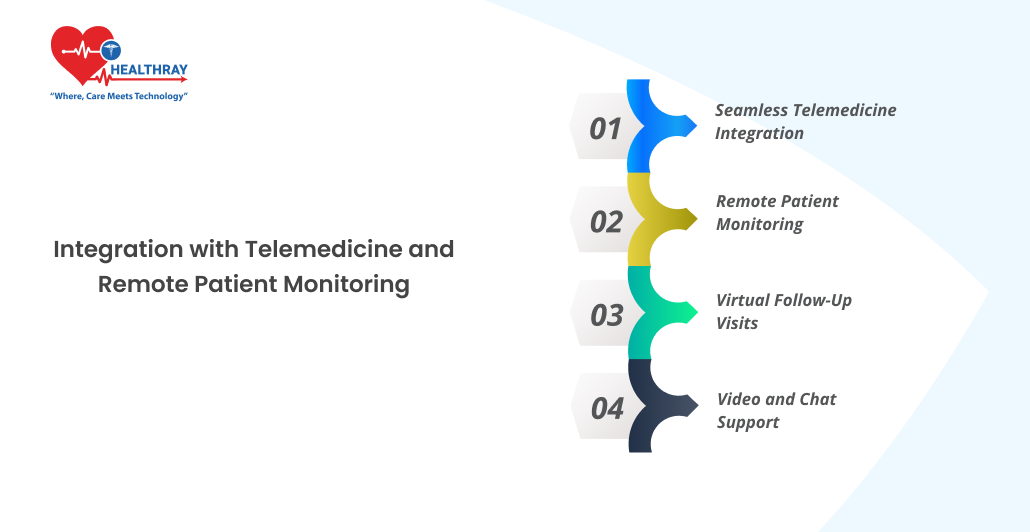
Telemedicine has expanded significantly since the pandemic, and the direction is likely to continue in 2025. Remote consultations and patient monitoring are increasingly becoming core functions of contemporary medicine. A future-proof EMR system should support these capabilities seamlessly.
- Seamless Telemedicine Integration: The EMR should be able to schedule and conduct telemedicine appointments directly within the system, and concomitantly update the patient’s record automatically during consultations.
- Remote Patient Monitoring: Search for EMR systems which incorporate wearable devices (heart rate monitors, glucose sensors, or fitness trackers) . This is possible providing doctors the ability to monitor patient health in real-time and actively intervene pre-emptively when issues arise.
- Virtual Follow-Up Visits: Telemedicine adoption must, therefore, be inclusive of virtual repeat visit functionalities for patients suffering from chronic conditions, that would minimise their need for face-to-face clinic visits.
- Video and Chat Support: Besides direct telemedicine,make sure that your EMR allows for use of video consultations and secure messaging so that patients can interact with the provider via this channel.
Scalable Cloud-Based Solutions
Cloud-based EMR systems have been adopted by more and more clinicians in 2025 for their extensibility, plug-and-play and 24/7 accessibility. Hospitals and clinics require scalable systems with which they are able (or deemed able) to increase in tandem with the growing patient volume, or to expand to other sites.
Cost-Effective Scaling: Cloud-based EMRs provide you flexibility to grow as you need without having to bear the initial hardware or infrastructure expenses. This is ideal for hospitals that expect rapid growth.
Remote Access: Cloud-based EMR provides access to patient records by doctors and administrative staff from anywhere. This is especially good for multisite practices or healthcare providers that require access to the data while traveling from hospital to hospital.
Automatic Updates and Backups: Cloud-based solution guarantees you are running the most recent version of the software without business interruption. Regular backups mitigate the likelihood of data loss to failures of the underlying system or to cyberattacks.
Flexible Pricing Models: The majority of cloud-based EMRs have flexible models of pricing, enabling hospitals to pay only for the services they subscribe to. This simplifies the process of budgeting and scaling up the system as your able nursing facility expands.
Conclusion
Selecting an effective EMR software by 2025 will play a major role in the day-to-day success of hospitals, multi-specialty clinics, and physician offices. Characteristics such as interoperability, AI-enabled automation, data security and telemedicine integration will differentiate the most effective systems. By looking at these characteristics, hospital owners can guarantee that they are putting money into a system that has a mind set improving the quality of patient care, increasing operational efficiency and staying up to date with latest regulation changing trends. With the ever changing healthcare landscape, a flexible, scalable EMR system can serve as a good friend in operating your facility.
